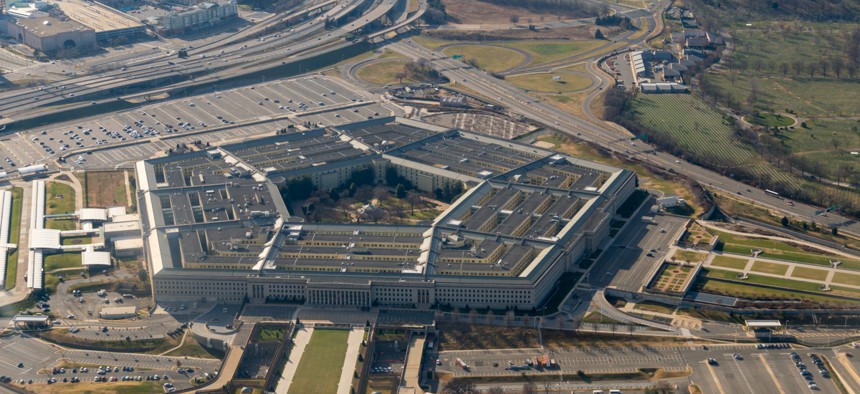Congressional Report Spotlights AI, Emerging Technologies as Future of National Security

Austin Nooe/Shutterstock.com
The House Armed Services Committee’s Future of Defense Task Force released its final report advocating for a revolution in how the U.S. approaches national security.
Artificial intelligence takes center stage in a new Congressional report on the future of defense that urges a foundational shift in how the U.S. approaches national security.
Reps. Seth Moulton, D-Mass., and Jim Banks, R-Ind., who led the House Armed Services Committee’s bipartisan Future of Defense Task Force, discussed the final report’s recommendations at a Brookings Institution webinar Wednesday.
The report takes a broad, 30-year view of the future of defense, emphasizing a whole-of-government approach and calling for greater collaboration between Silicon Valley or other innovative industry sectors and government. The task force makes the case for developing emerging technologies both for the direct benefits to national security of improving Pentagon operations and the indirect benefits global technology leadership could provide.
“We’re calling for a real revolution in how we approach our national security,” Moulton said, arguing that without such a revolution the U.S. will lose its competitive advantage to Russia in the short-term and China down the pike.
From the technology perspective, the report complements work by other entities like the National Security Commission on Artificial Intelligence and underscores the importance of centers for innovation that already exist within the Pentagon, like the Defense Advanced Research Projects Agency.
Banks said the task force spent a lot of time reviewing these existing units including DARPA, Kessel Run and the Joint Artificial Intelligence Center, and concluded the type of projects on which they work deserve a preeminent position in the future of defense.
“I’m fully convinced this is a lot less about spending more money and a lot more about forcing the Pentagon’s hand to develop that mindset and attitude of fostering the type of innovation that we need,” Banks said.
Artificial intelligence and automation are keystones, according to the vision laid out in the report, to achieving this mindset change. The first recommendation in the report would embed requirements to consider AI or autonomous technologies directly into the acquisition process.
The provision stipulates every major defense acquisition program must consider at least one AI or autonomous alternative before the acquisition is funded in order to help overcome “cultural resistance” to adoption of these technologies beyond the JAIC.
Like findings in NSCAI’s reports and other recent reports, the future of defense analysis also advocates for greater research and development funding. One recommendation says the U.S. should spend at least one percent of its gross domestic product on government-supported research and development projects. A provision within the recommendation would require the military to spend “at least one percent of their overall budgets on the integration of new technologies” as well.
“Defense funding for science and technology programs, which have cultivated game-changing dual-use capabilities such as GPS and the Internet, has barely kept pace with inflation, as the military focuses on shorter term and incremental developments,” the report reads.
The task force report covers other hot-button technology issues including supply chain, science and technology workforce development and development of quantum computing capabilities as well. But AI is at the fore in the report.
“To compete with China especially and with Russia, greater AI capabilities are a must,“ Banks said.






